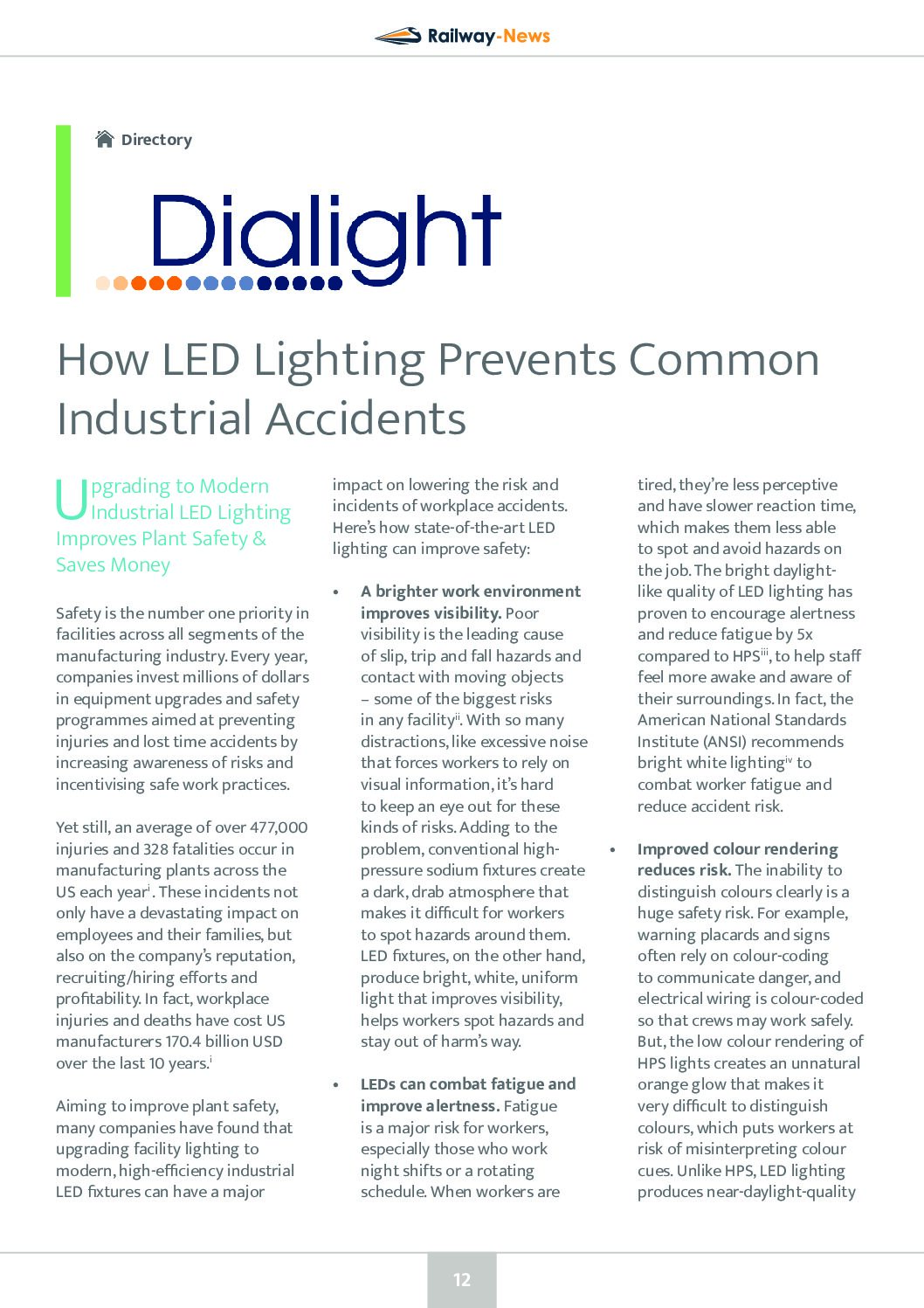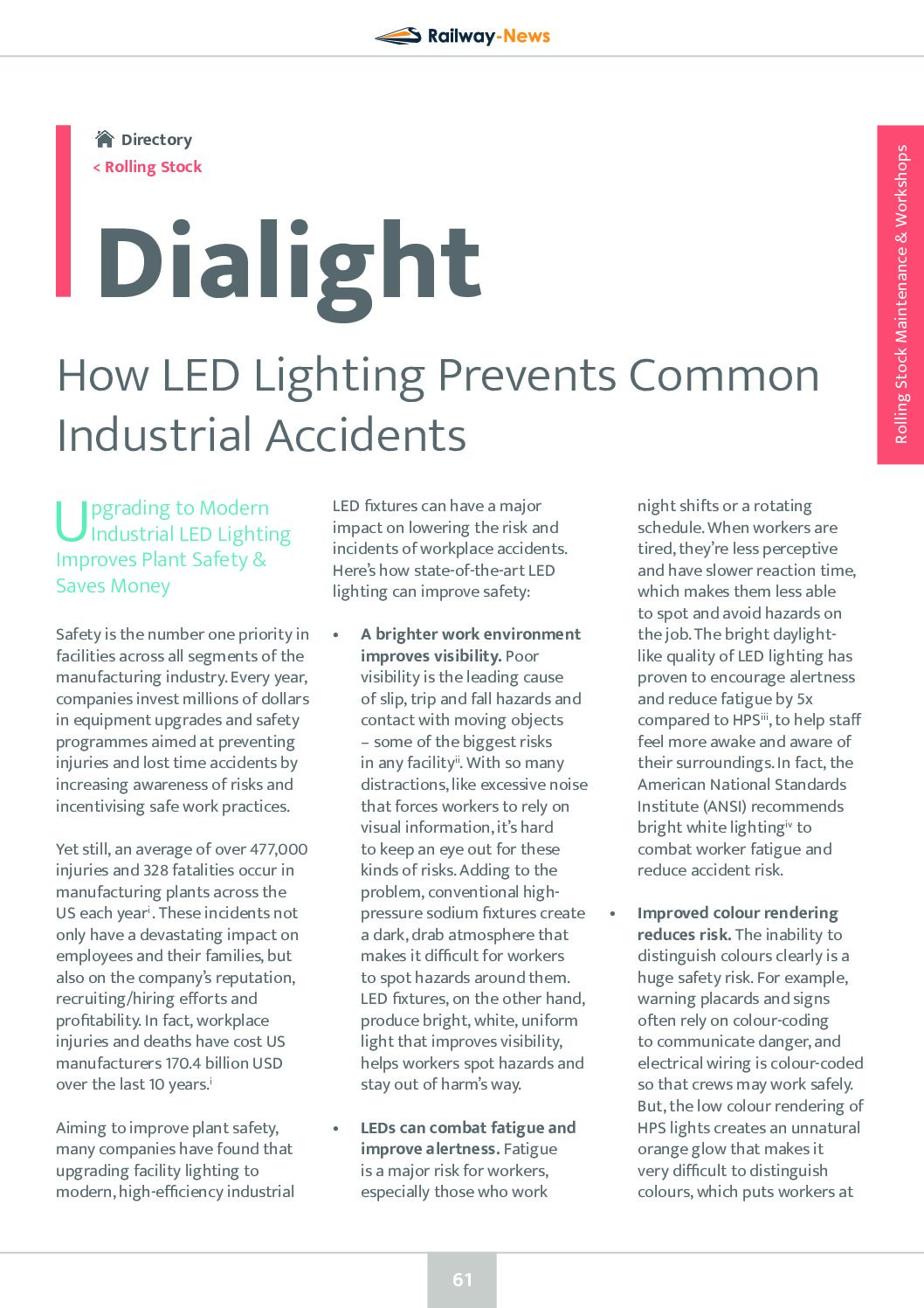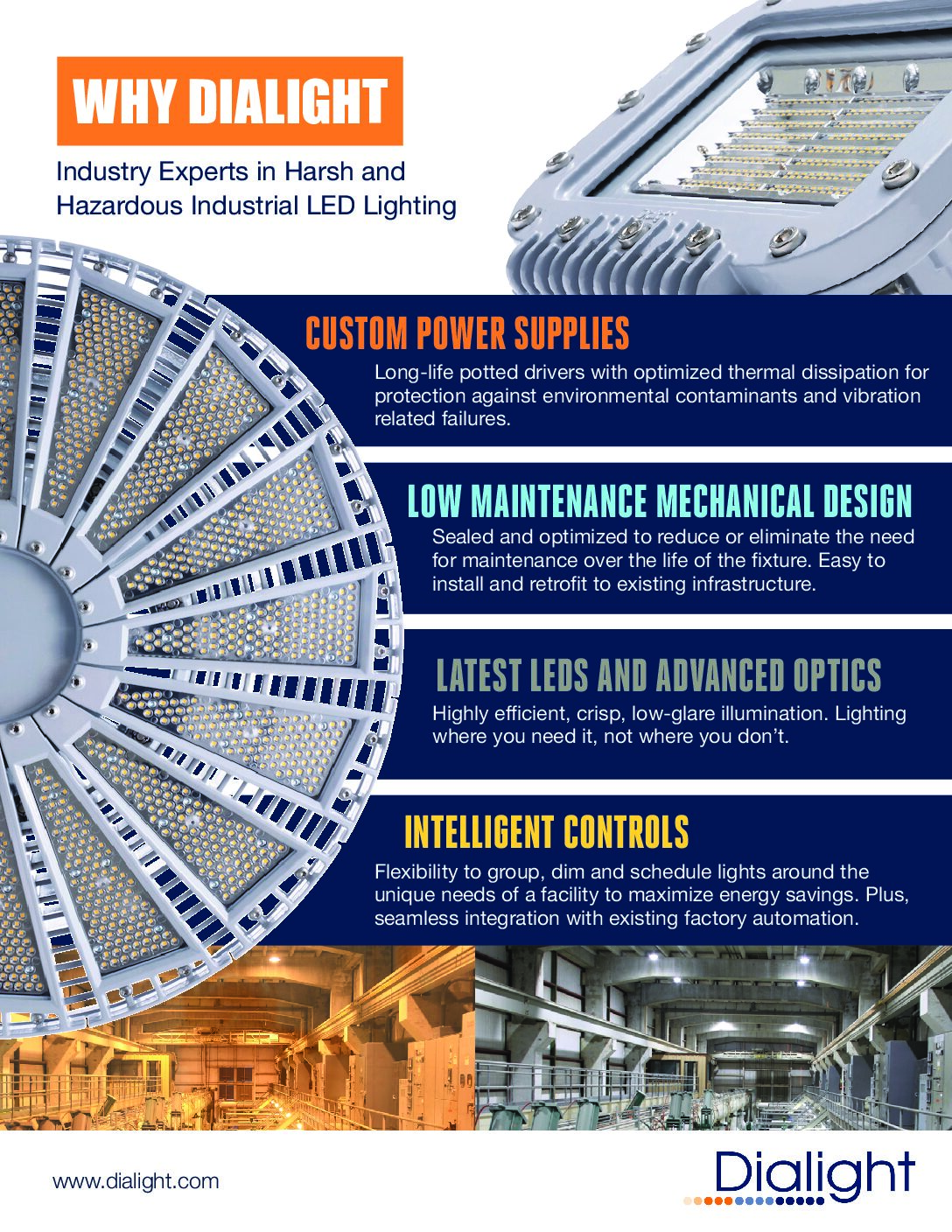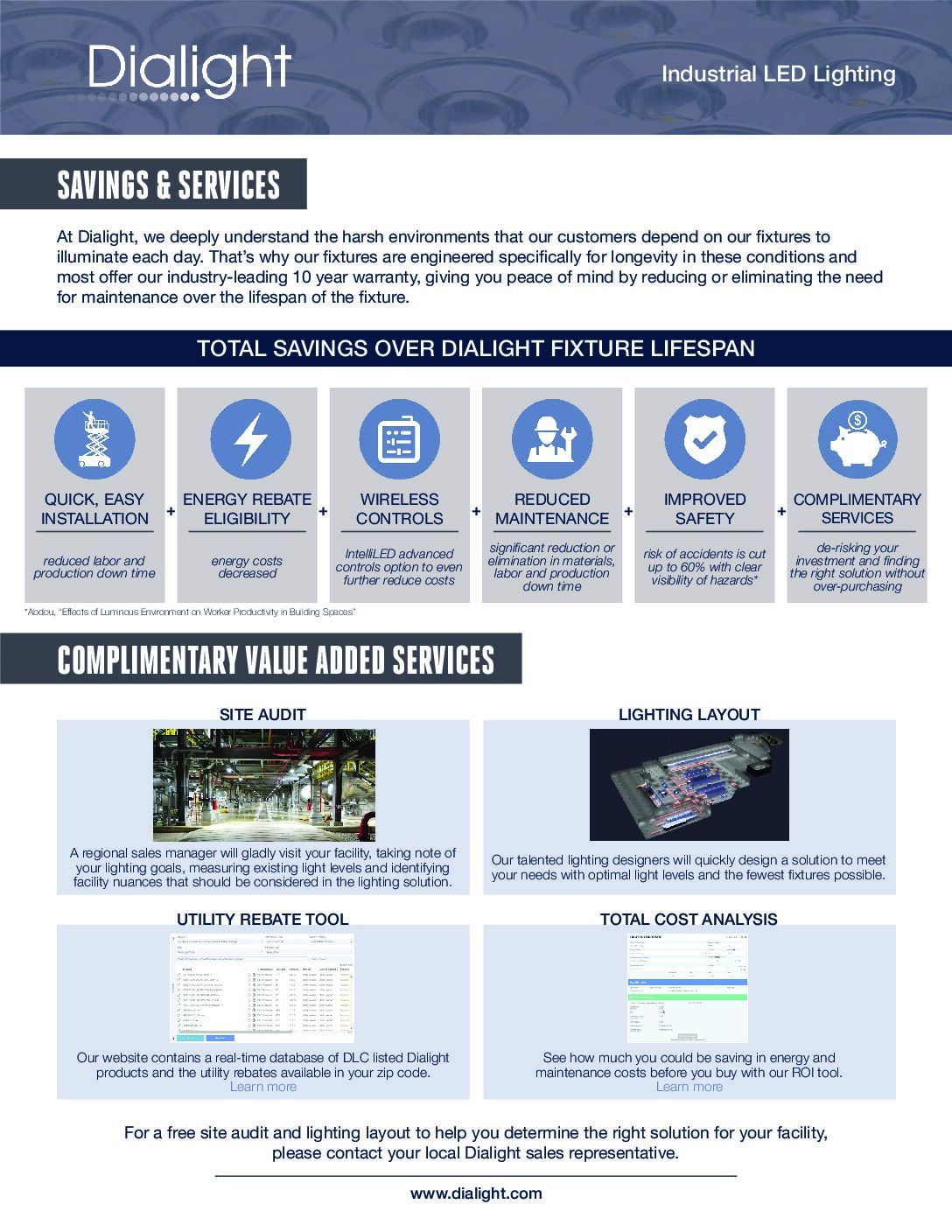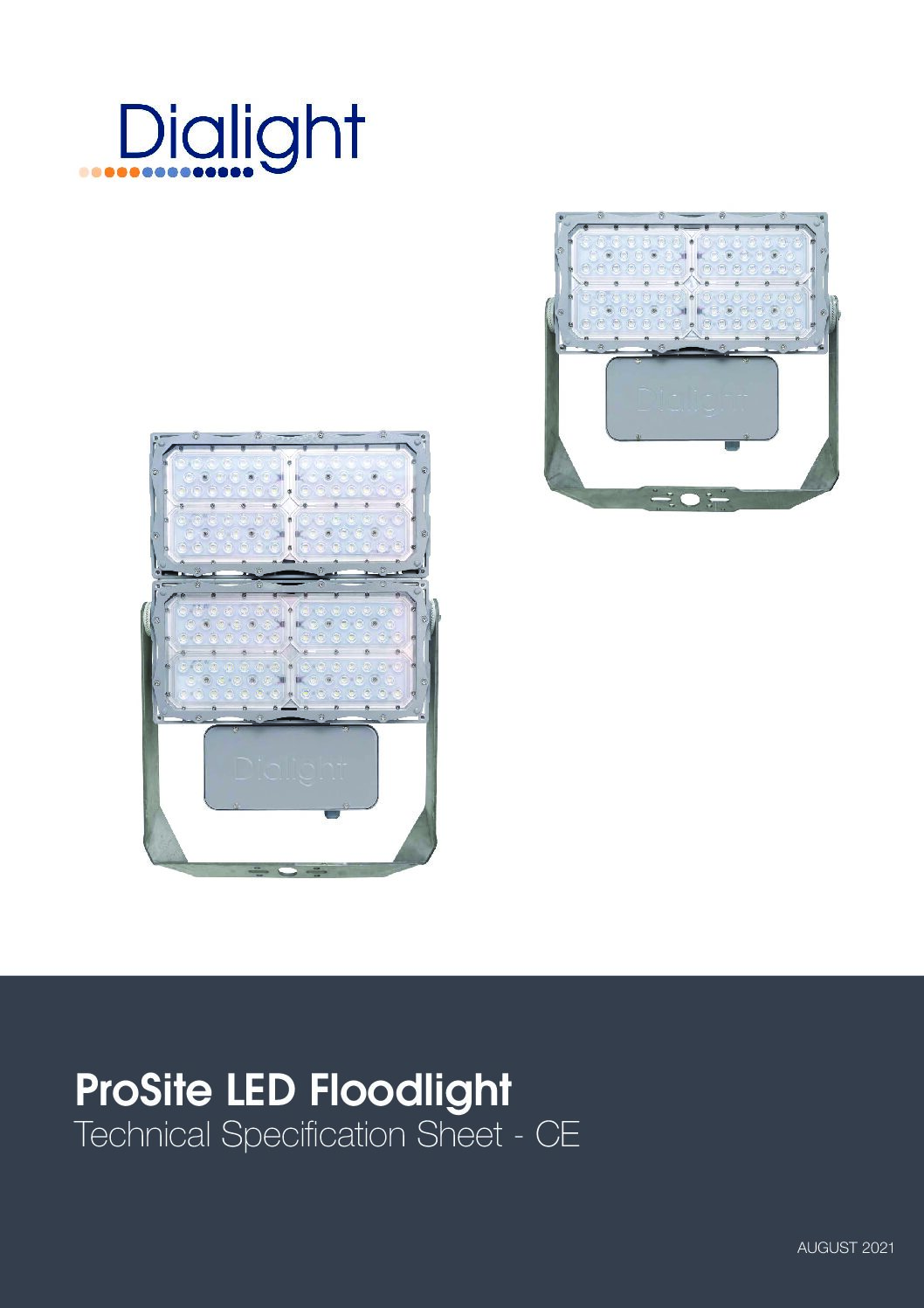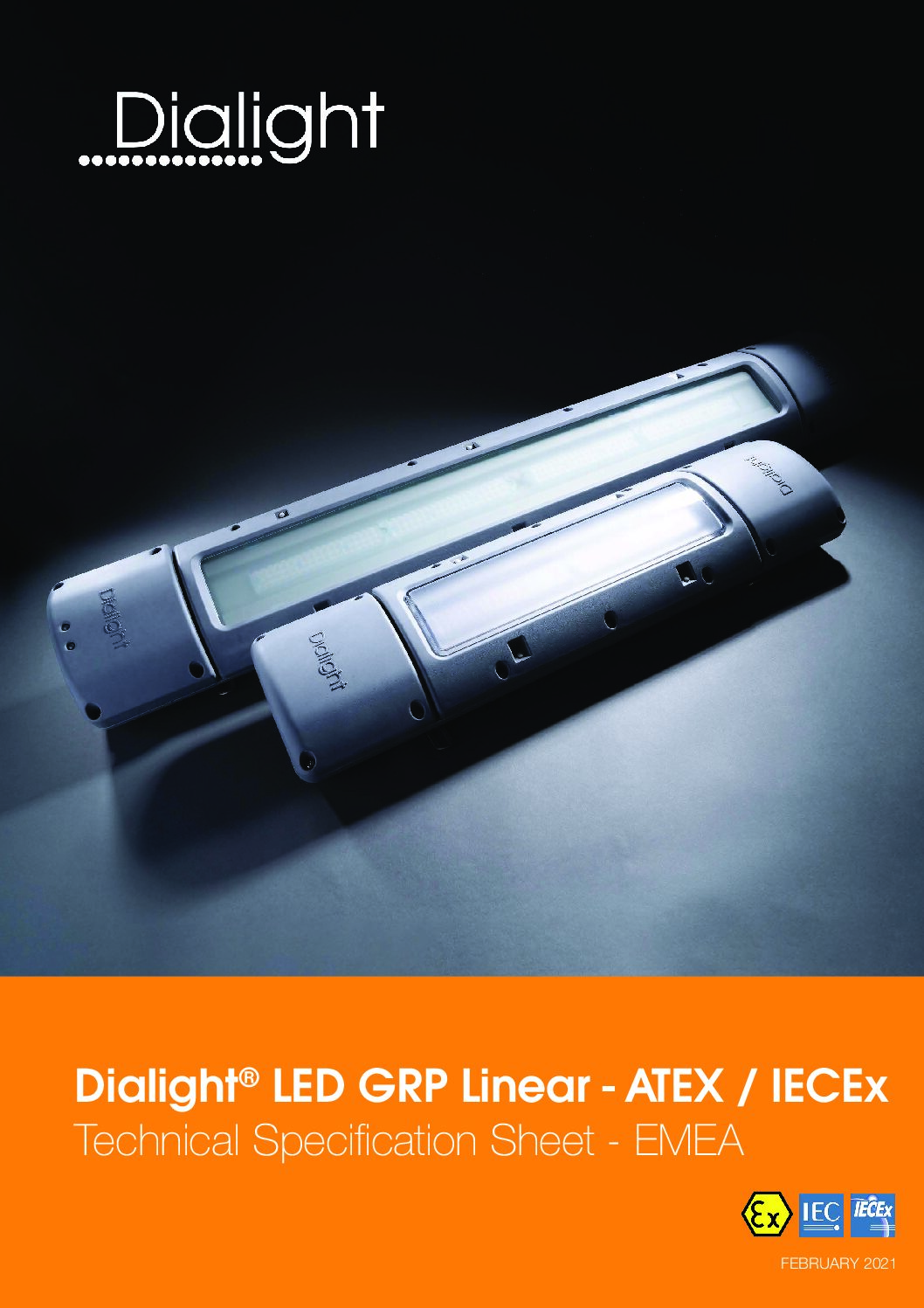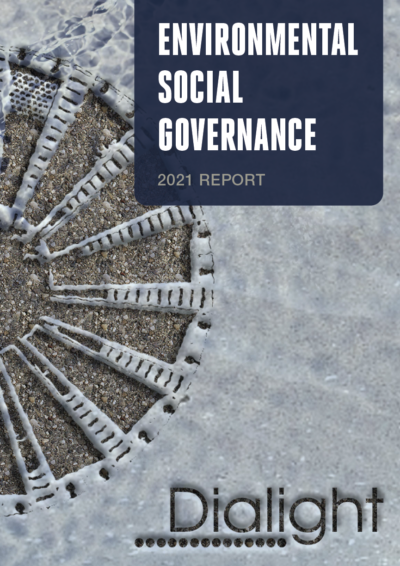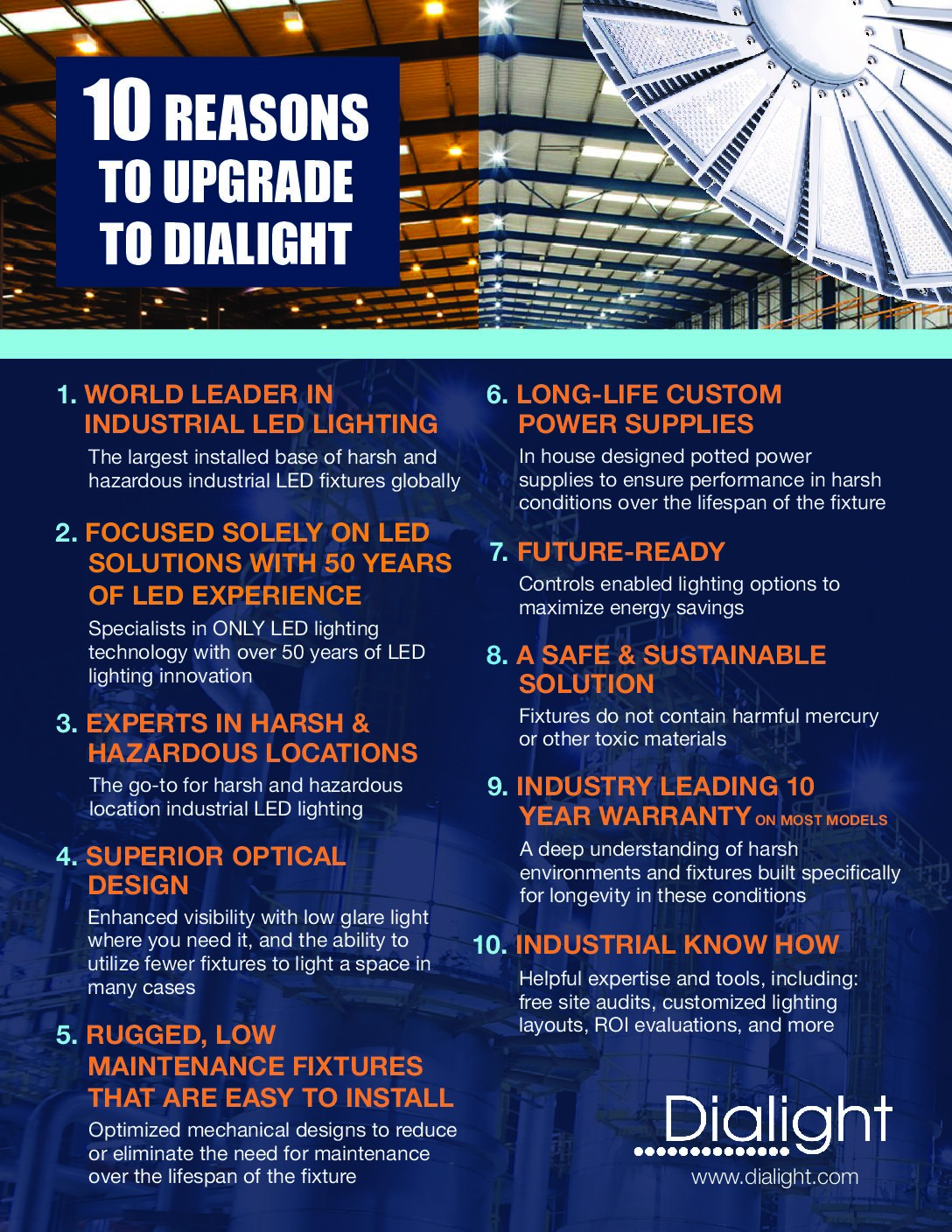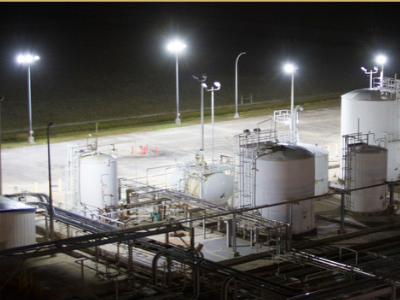Dialight Corporation
How LED Lighting Prevents Common Industrial Accidents
This article first appeared in the Railway-News magazine Issue 4 Track & Infrastructure edition, November 2022.
Upgrading to Modern Industrial LED Lighting Improves Plant Safety & Saves Money
Safety is the number one priority in facilities across all segments of the manufacturing industry. Every year, companies invest millions of dollars in equipment upgrades and safety programmes aimed at preventing injuries and lost time accidents by increasing awareness of risks and incentivising safe work practices.
Yet still, an average of over 477,000 injuries and 328 fatalities occur in manufacturing plants across the US each year. These incidents not only have a devastating impact on employees and their families, but also on the company’s reputation, recruiting/hiring efforts and profitability. In fact, workplace injuries and deaths have cost US manufacturers 170.4 billion USD over the last 10 years.
Aiming to improve plant safety, many companies have found that upgrading facility lighting to modern, high-efficiency industrial LED fixtures can have a major impact on lowering the risk and incidents of workplace accidents. Here’s how state-of-the-art LED lighting can improve safety:
- A brighter work environment improves visibility. Poor visibility is the leading cause of slip, trip and fall hazards and contact with moving objects – some of the biggest risks in any facility. With so many distractions, like excessive noise that forces workers to rely on visual information, it’s hard to keep an eye out for these kinds of risks. Adding to the problem, conventional high-pressure sodium fixtures create a dark, drab atmosphere that makes it difficult for workers to spot hazards around them. LED fixtures, on the other hand, produce bright, white, uniform light that improves visibility, helps workers spot hazards and stay out of harm’s way.
- LEDs can combat fatigue and improve alertness. Fatigue is a major risk for workers, especially those who work night shifts or a rotating schedule. When workers are tired, they’re less perceptive and have slower reaction time, which makes them less able to spot and avoid hazards on the job. The bright daylight-like quality of LED lighting has proven to encourage alertness and reduce fatigue by 5x compared to HPSiii, to help staff feel more awake and aware of their surroundings. In fact, the American National Standards Institute (ANSI) recommends bright white lighting to combat worker fatigue and reduce accident risk.
- Improved colour rendering reduces risk. The inability to distinguish colours clearly is a huge safety risk. For example, warning placards and signs often rely on colour-coding to communicate danger, and electrical wiring is colour-coded so that crews may work safely. But, the low colour rendering of HPS lights creates an unnatural orange glow that makes it very difficult to distinguish colours, which puts workers at risk of misinterpreting colour cues. Unlike HPS, LED lighting produces near-daylight-quality white light that makes colours appear natural and easily distinguishable. That means workers can interpret signage clearly, and there’s much less risk that an electrician will cut the wrong wire.
